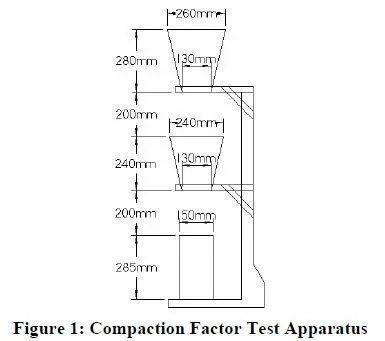The wet sieving stability test (EFNARC 2002; Bartos, Sonebi, and Tamimi 2002) was developed by a French contractor to measure the segregation resistance of self-compacting concrete. To perform the test, a 10 liter sample of concrete is placed inside a bucket and allowed to sit for 15 minutes to allow any internal segregation to occur. The container is sealed to prevent evaporation. After sitting for 15 minutes, the top approximately 2 liters of the concrete is poured from the bucket into a smaller pouring container. This 2 liter sample of concrete is then poured from a height of 500 mm onto a 5 mm sieve. Mortar from the sample is allowed to flow through the sieve into a lower sieve pan for a period of 2 minutes. The mass of the concrete poured onto the sieve, Ma, and the mass of mortar in the sieve pan, Mb, are measured and used to calculate the segregation ratio:
Mb/Ma * 100%
The segregation ratio should be between 5-15% for acceptable segregation resistance. Concretes with a segregation ratio above 15% will exhibit too much segregation. Severe segregation is suspected if the segregation ratio is above 30%. If the segregation ratio is less than 5%, the sample is too harsh and will result in a poor surface finish.
Although the test results are valuable and accurate, the test is slow and requires an accurate scale, making it unsuitable for field use. Additionally, poor repeatability of the test results has been reported.
